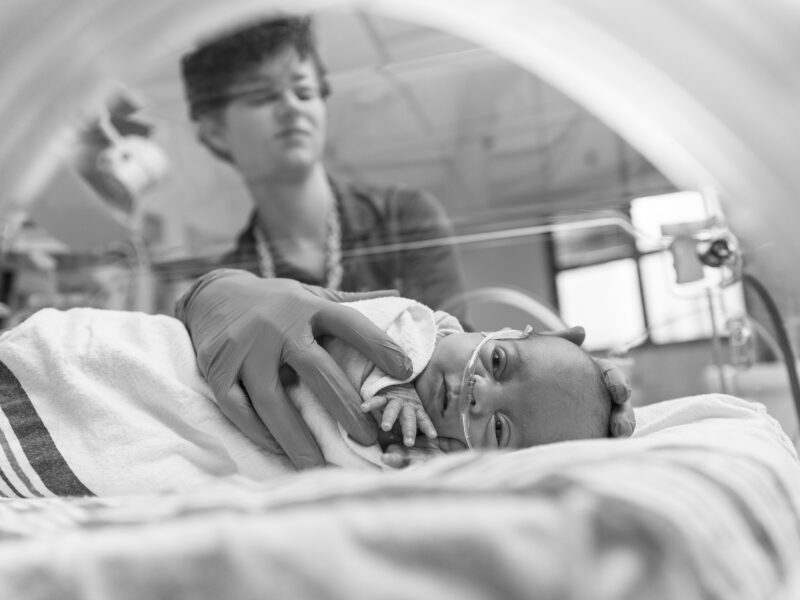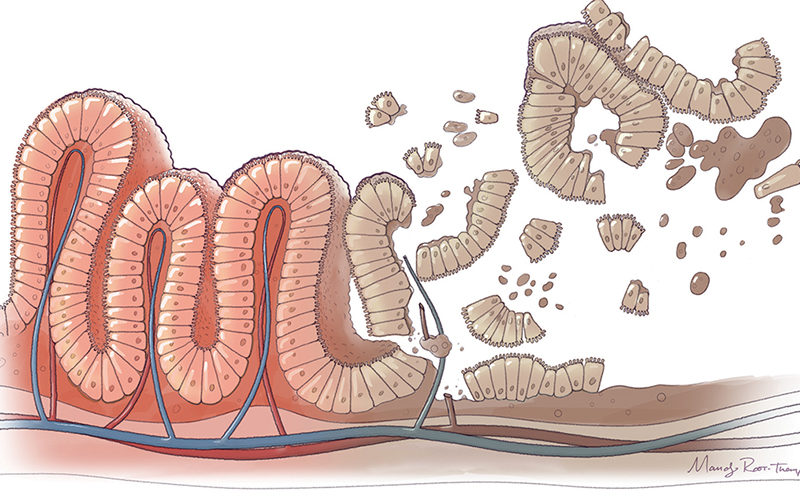Hospitals Should Use Genotyping to Monitor Bacterial Infections
Hospitals Should Use Genotyping to Monitor Bacterial Infections https://pediatricsnationwide.org/wp-content/themes/corpus/images/empty/thumbnail.jpg 150 150 Kevin Mayhood Kevin Mayhood https://secure.gravatar.com/avatar/bd57a8b155725b653da0c499ae1bf402?s=96&d=mm&r=g- January 04, 2017
- Kevin Mayhood
A team led by a pulmonologist-researcher found that in a children’s hospital, an unexpected pathogen emerges as a common cause of infection.
The bacteria Acinetobacter baumannii is a widely-reported cause of healthcare-associated infections, particularly in adult intensive care units in developing countries. But a retrospective study of isolated cases at Nationwide Children’s Hospital found that Acinetobacter pittii recently emerged as the more common cause of infection among patients there.
At a time when hospitals are trying to eliminate all possible harm, the discovery drives home the importance of being vigilant and of taking advantage of the latest genotyping techniques, the researchers say.
“As we try to characterize hospital acquired infections, it’s important to do good speciation of the bacteria,” says Benjamin Kopp, MD, a pulmonologist and principal investigator in the Center for Microbial Pathogenesis at The Research Institute at Nationwide Children’s, and study author. “The Acinetobacter complex contains many different species that can act differently, so you can’t really monitor trends if you don’t have proper identification of the bacteria causing the infection.”
Even in developed countries, inconsistencies and/or limitations in clinical laboratory identification methods have resulted in failure to reliably differentiate among the members of the Acinetobacter calcoaceticus-baumannii complex, leading to misidentification of infection causes, the research team says.
The vast majority of studies on the infections have been done in adult hospitals. To learn what is occurring in a pediatric academic setting, Dr. Kopp and his colleagues analyzed frozen isolates and records from 22 patients who had Acinetobacter infections from 2009 to 2013. The team used Acinetobacter rpoB hyper-variable region sequencing and other phenotypic methods to identify species.
Among the patients, whose mean age was 3.5 years old, A. pittii caused 45.8 percent of the infections overall, but 70 percent during the last two years of the study. A. baumannii caused 33.3 percent overall. Other species identified include one strain of A.calcoaceticus and two strains of A. nosocomialis.
While other studies have found A. baumannii infections are associated with high mortality rates due to drug resistance, the team found the rate inside the hospital was significantly lower. Two deaths occurred and both children were infected with A. pittii. Dr. Kopp and his colleagues demonstrated that 17 percent of the bacterial isolates were multiple-drug resistant and the rest were treatable with antibiotics, particularly aminoglycosides.
Surface and twitching motility, which enables the bacteria to move inside the body and aggregate, was found to be nearly equal in the A. pittii and A. baumannii strains, but A. pittii had significantly higher biofilm production, which is associated with protection against antibiotics.
The children had been in different parts of the hospital when infections were discovered and more than 40 percent were already on antibiotics due to their immunosuppressive state. The bacteria were predominately associated with bloodstream infections in which a central venous catheter was the source of the first positive culture.
“These were isolated cases, which remind us to keep up with good infection-prevention practices, and these cases were over a 5-year-period, so that speaks to the bacteria’s ability to survive in the environment,” says Dr. Kopp, who is also an assistant professor of Pediatrics at The Ohio State University College of Medicine.
Nationwide Children’s will continue to collect the isolates and perform a prospective study, monitoring the species and whether multi-drug-resistant strains develop.
The researchers suggest academic children’s hospitals and community hospitals set up their own labs or contract with other labs to use accurate genotyping techniques and keep up with infection trends within their facilities.
In the future, Dr. Kopp said, “Looking at this from multiple institutions would improve the knowledge of whether certain types of Acinetobacter infections are isolated to our geographic area, our own hospital, or are spread much wider.”
Reference:
Jain AL, Harding CM, Assani K, Shrestha C, Haga M, Leber A, Munson RS Jr, Kopp BT. Characteristics of invasive Acinetobacter species isolates recovered in a pediatric academic center. BMC Infectious Diseases.2016 Jul 22;16:346.
About the author
-
Kevin Mayhoodhttps://pediatricsnationwide.org/author/kevin-mayhood/
-
Kevin Mayhoodhttps://pediatricsnationwide.org/author/kevin-mayhood/April 25, 2015
-
Kevin Mayhoodhttps://pediatricsnationwide.org/author/kevin-mayhood/April 25, 2015
-
Kevin Mayhoodhttps://pediatricsnationwide.org/author/kevin-mayhood/April 25, 2015
- Posted In:
- In Brief







